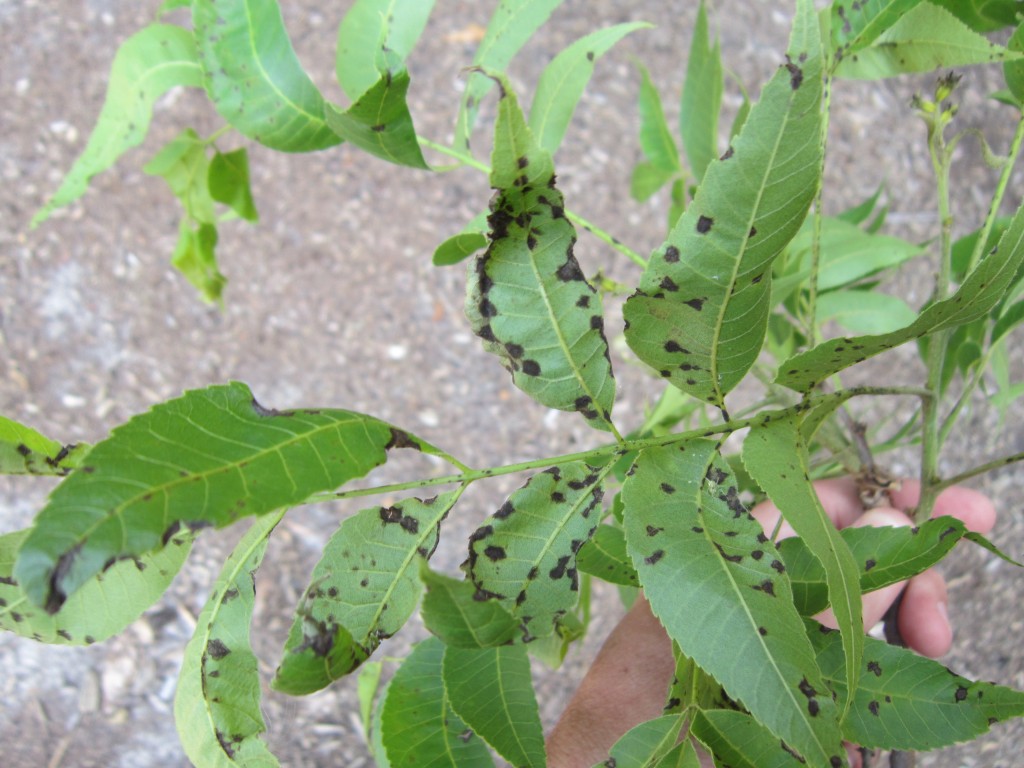By Clint Thompson

Increased rainfall last week had pecan producers feeling antsy about applying fungicide sprays for scab disease. But that should only apply to a small percentage.
Most growers still can wait to start their fungicide applications, says University of Georgia Cooperative Extension Pecan Specialist Lenny Wells.

“I’ve had calls from some (growers), and some of them I agree, in their situations, it may be time to spray. For the most part, I think we can still hold off another week or so. With the costs of everything right now, the sooner we start spraying, the more sprays we’re going to end up having to make,” Wells said. “In some places, if you’re in an area that has a history of scab pressure and you’ve got a real susceptible variety, then yeah it may be time to start here pretty soon. But if you’ve got a variety that’s more moderately susceptible or you’re in an area where scab pressure has not historically been that high, then I think you can wait a little while.”
Scab is a fungal disease that infects the leaves or nuts of pecan trees. If it affects the nut early enough, scab can cause the pecan to blacken and fall from the tree. Scab thrives on trees that have received moisture.
Wells notes in his UGA Extension pecan blog that scab development will be based on the period of leaf wetness. If it rains more frequently, growers will need to tighten up their spray schedules for medium and high susceptibility cultivars. If it turns dry and pressure is low, chemical applications can be spaced out more, early in the season, especially with medium susceptibility cultivars.
“The biggest problem with scab is going to come during the nut sizing period, once June gets here. There’s no margin for error at that point, and you have to stay on a strict schedule then,” Wells said. “Early in the season, while it’s important to manage for leaf scab, I think we’ve got a little bit more leeway to work with. If you’re going to save on any sprays, that’s the time to do it, is early.”
Source: UGA Extension pecan blog










